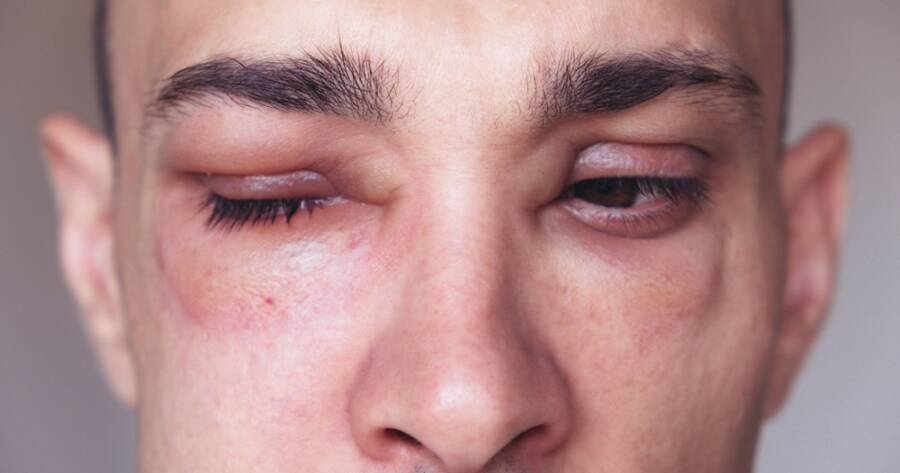Angioedema is characterized by swelling beneath the skin, often affecting areas such as the face, lips, eyes, and throat. This condition can develop suddenly and lead to visible, sometimes severe, swelling. Recognizing the symptoms early is crucial for effective treatment and proper management, especially in cases where the swelling impacts the throat or airways. While angioedema can be a stand-alone condition, it is frequently associated with other allergic reactions or underlying medical conditions, making prompt diagnosis and treatment essential.
What is Angioedema?
Angioedema refers to the rapid swelling of the deeper layers of the skin, typically the dermis and subcutaneous tissue. It often presents as a reaction to an allergen, medication, or an underlying condition. While it’s similar to hives (urticaria), which involve swelling on the skin’s surface, angioedema is usually much deeper and can be more difficult to treat. In severe cases, angioedema can lead to dangerous complications, especially if it involves the throat or airways, causing difficulty breathing.
Common Symptoms of Angioedema
The hallmark symptom of angioedema is swelling, which can occur suddenly and without warning. The swelling may appear on various parts of the body but is most commonly seen on the face, lips, eyes, and throat. Here are the primary symptoms of angioedema:
- Swelling of the Face and Lips: One of the most noticeable symptoms of angioedema is swelling, often starting in the face or lips. This can make the face look puffy, and the lips may appear swollen or disproportionate. It is often painless but can be uncomfortable.
- Swelling of the Eyes: The eyelids may become swollen and puffy, making it difficult to open the eyes. This can be alarming but is typically not a cause for serious concern unless it interferes with vision.
- Swelling of the Throat and Tongue: When swelling affects the throat, it can become a medical emergency. Angioedema in the throat may lead to difficulty breathing, swallowing, or speaking. This symptom is potentially life-threatening and requires immediate medical attention.
- Swelling of the Hands, Feet, or Genitals: Less commonly, angioedema can cause swelling in the extremities or the genital area. These instances may be associated with other underlying conditions, such as certain autoimmune diseases.
- Pain or Tenderness: While swelling is typically painless, some people may experience mild discomfort, particularly if the swelling occurs in the deeper layers of the skin or around joints.
- Itching or Rash: In some cases, angioedema is accompanied by itching or a rash, particularly if it is triggered by an allergic reaction. This may overlap with hives and can intensify discomfort.
Causes and Triggers of Angioedema
Angioedema can be triggered by a variety of factors. Some of the most common causes include:
- Allergic Reactions: The most common cause of angioedema is an allergic reaction to foods, insect stings, medications, or other environmental allergens. Common allergens include nuts, shellfish, pollen, and pet dander.
- Medications: Certain medications, particularly angiotensin-converting enzyme (ACE) inhibitors used for high blood pressure, can cause angioedema as a side effect. Nonsteroidal anti-inflammatory drugs (NSAIDs) and antibiotics may also trigger the condition.
- Hereditary Angioedema (HAE): This is a genetic condition where individuals experience recurrent angioedema attacks, often without any allergic trigger. HAE is caused by a deficiency in a protein that helps control inflammation.
- Infections or Illnesses: Infections, such as viral infections, or underlying illnesses, like autoimmune diseases, can trigger or worsen angioedema.
- Physical Triggers: Some individuals experience angioedema due to physical factors, such as temperature changes, stress, or pressure on the skin.
Treatment and Management of Angioedema
Treatment for angioedema depends on the severity and underlying cause of the condition. If the swelling is mild and caused by an allergic reaction, antihistamines or corticosteroids may be prescribed to reduce inflammation and control symptoms. In more severe cases, particularly those involving the throat, epinephrine or other emergency medications may be needed to prevent breathing difficulties.
- Antihistamines: These are often used to treat mild angioedema by reducing swelling and calming the allergic response. Over-the-counter antihistamines or stronger prescription versions may be recommended based on the severity of symptoms.
- Corticosteroids: For moderate to severe cases, corticosteroids may be prescribed to reduce swelling and inflammation. These medications can help treat angioedema triggered by allergies or inflammatory diseases.
- Epinephrine: If angioedema affects the throat or breathing, epinephrine (commonly administered via an EpiPen) may be necessary to rapidly reduce swelling and prevent life-threatening complications.
- Avoiding Triggers: If the cause of angioedema is identified (e.g., specific allergens or medications), avoiding these triggers can be one of the most effective long-term management strategies. For hereditary angioedema, preventive treatments such as C1-inhibitor concentrates may be used.
- Lifestyle Changes and Monitoring: Keeping track of triggers and symptoms through a journal can help individuals better understand what causes their angioedema flare-ups. Maintaining a healthy lifestyle, managing stress, and avoiding known allergens can further help in managing the condition.
Early Recognition and Management of Angioedema Symptoms
Angioedema is a condition characterized by rapid swelling beneath the skin, often affecting the face, lips, and throat. Understanding the symptoms and causes of angioedema is essential for timely treatment and avoiding complications. While it can often be managed with medication, identifying and avoiding triggers is key to preventing future flare-ups. For severe cases, especially those involving the throat, immediate medical attention is necessary to ensure safe and effective treatment. If you or someone you know experiences angioedema, consulting with a healthcare provider is important to determine the best course of action for management.





